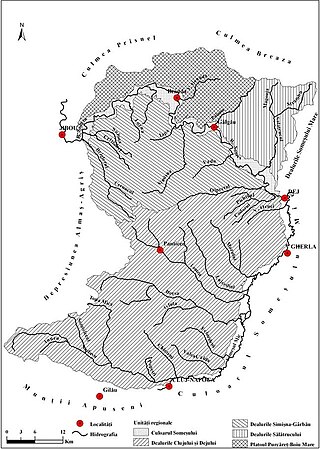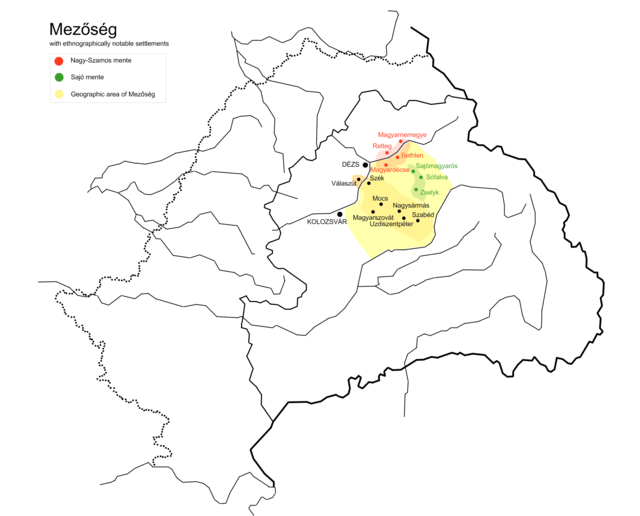Transylvanian Plateau
Plateau in Romania From Wikipedia, the free encyclopedia
Plateau in Romania From Wikipedia, the free encyclopedia
The Transylvanian Plateau (Romanian: Podișul Transilvaniei; Hungarian: Erdélyi-medence) is a plateau in central Romania.



The plateau lies within and takes its name from the historical region of Transylvania, and is almost entirely surrounded by the Eastern, Southern and Romanian Western branches of the Carpathian Mountains. The area includes the Transylvanian Plain.
It is improperly called a plateau, for it does not possess extensive plains, but is formed of a network of valleys of various size, ravines and canyons, united together by numerous small mountain ranges, which attain a height of 150–250 m (490–820 ft) above the altitude of the valley.[1]
The plateau has a continental climate. Temperature varies a great deal in the course of a year, with warm summers contrasted by very cold winters. Vast forests cover parts of the plateau and the mountains. The mean elevation is 300–500 m (980–1,640 ft).
The Transylvanian Plateau is divided into three areas:
The Transylvanian Plain is also hilly (400–600 m), but because the area is almost completely cultivated it is called a plain.[2]
The Transylvanian Basin (Romanian: Depresiunea colinară a Transilvaniei) includes the Transylvanian Plateau and the peripheral areas towards the Carpathian Mountains, which have a different character than the plateau.[2] The basin is the main production site of Romania's methane. It also contains a salt dome.[3]
Seamless Wikipedia browsing. On steroids.
Every time you click a link to Wikipedia, Wiktionary or Wikiquote in your browser's search results, it will show the modern Wikiwand interface.
Wikiwand extension is a five stars, simple, with minimum permission required to keep your browsing private, safe and transparent.